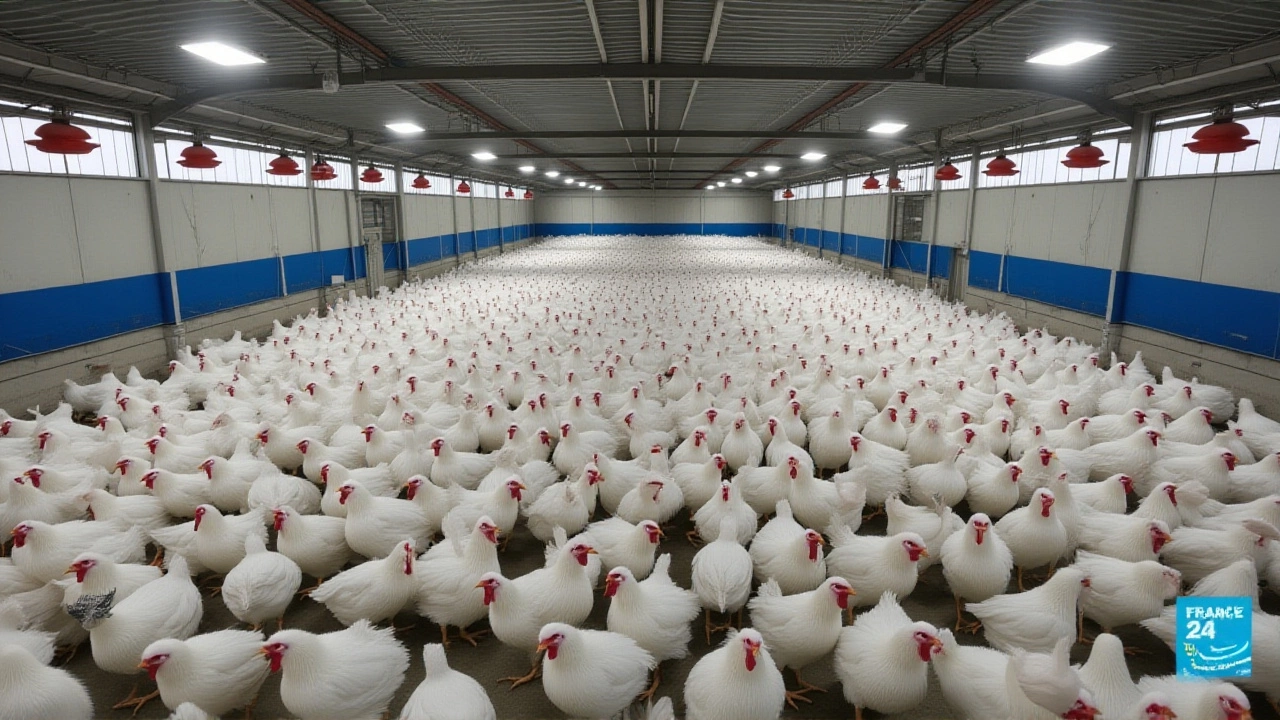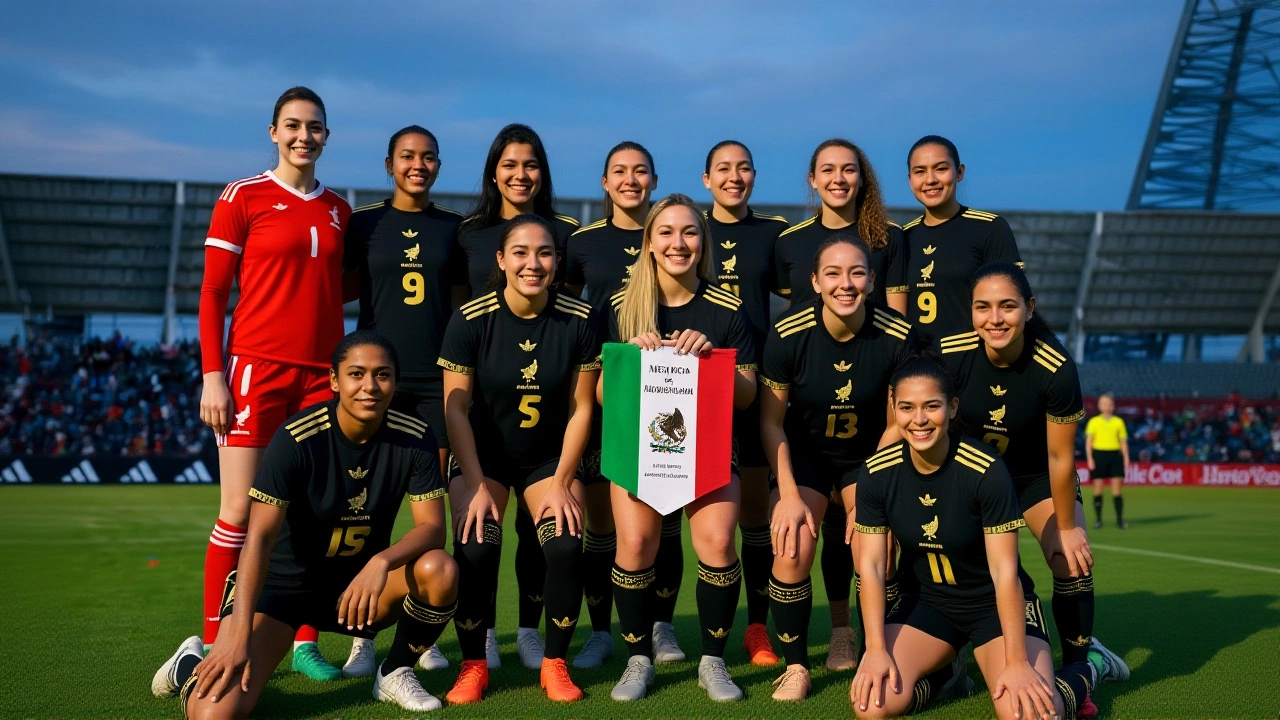Brazil’s First Bird Flu Outbreak Shuts Global Poultry Exports, Even After Official Clearance

When Brazil confirmed its first-ever Highly Pathogenic Avian Influenza outbreak in a commercial poultry farm on May 23, 2025, the world didn’t just take notice—it slammed its doors shut. Within hours, the European Union, China, and Mexico halted all chicken and egg imports from Brazil. By Saturday, May 24, Chile and Uruguay followed suit. The outbreak, centered on a single farm in Montenegro, a quiet town 60 kilometers from Porto Alegre in the southern state of Rio Grande do Sul, sent shockwaves through a global industry that relies on Brazil as the world’s second-largest chicken producer—and its top exporter.
How It All Unfolded
The Ministry of Agriculture, Livestock and Food Supply (MAPA) confirmed the outbreak on May 23 after more than 100,000 birds died in two sheds at the farm. Ananda Paula Kowalski, Coordinator of the Poultry Health Program of the State of Rio Grande do Sul, described the scene in a rare on-the-ground interview: "Almost 100% of the poultry in the first shed died as a result of the disease, and by last night, we had already lost about 80% of the birds in the second shed. The remaining birds were culled."
MAPA immediately declared a 60-day animal health emergency. Teams in hazmat suits erected physical barriers around the farm. Placards reading "Propriedade selada"—"Property sealed off"—were posted in Portuguese, filmed by AP journalist Wesley Santos. No other farms in the region tested positive. The virus, experts later confirmed, was contained to that single location.
Why Brazil Matters—And Why the World Reacted So Fast
Brazil doesn’t just produce chicken. It feeds the world. According to U.S. Department of Agriculture data, Brazil accounts for 14% of global chicken meat production. Its three southern states—Paraná, Santa Catarina, and Rio Grande do Sul—together supply 77% of the country’s poultry exports. Paraná alone contributes 42%, Santa Catarina 22%, and Rio Grande do Sul 13%.
Just months before the outbreak, Brazil’s exports were surging. Egg shipments to the United States jumped 1,000% between January and April 2025, thanks to a domestic shortage caused by its own bird flu outbreaks. Buyers from Japan, Saudi Arabia, and the Middle East were snapping up Brazilian chicken at record prices. Then came the news from Montenegro.
The Aftermath: A Country Cleared, But Still Locked Out
On June 18, 2025, MAPA formally notified the World Organisation for Animal Health (WOAH) that no further cases had been detected. WOAH validated the claim and updated Brazil’s status to HPAI-free. It was a technical victory. But in global trade, perception often outweighs proof.
As of late June, ten countries—including the European Union, China, and Chile—still enforced total import bans. Only Mexico changed course. In a tactical move, it narrowed its restriction to products originating from Rio Grande do Sul, allowing chicken from Paraná and Santa Catarina to resume shipments. Brazil’s Ministry of Agriculture noted this shift as the first crack in the wall of bans.

Who Pays the Price?
It’s not just farmers. It’s grocery shelves from Tokyo to Toronto. Brazilian poultry is cheaper than U.S. or European chicken, making it the backbone of budget meals in over 150 countries. In Egypt, chicken prices spiked 18% after the ban. In South Korea, schools scrambled to find alternatives for their lunch programs. Meanwhile, U.S. poultry producers, who had just lost their own export markets to bird flu, now faced renewed domestic pressure to ramp up production—just as feed costs hit a five-year high.
"This isn’t just about one farm," said Dr. Lucas Mendes, a veterinary epidemiologist at the Federal University of Pelotas. "It’s about how quickly global markets punish uncertainty—even when science says the threat is gone. Brazil’s system worked. The response was swift, transparent, and effective. But trust? That takes years to rebuild."
What’s Next?
Brazil is now lobbying for bilateral verification protocols with key importers. It’s offering third-party audits and real-time farm monitoring data to rebuild confidence. The MAPA has also begun funding biosecurity upgrades for 500 medium-sized farms, aiming to make the entire southern region a model for disease prevention.
But the real test will come in late 2025 and early 2026, when new shipments resume. Will buyers return? Or has the stigma stuck?

Background: A Country Unprepared for This
Brazil had never seen HPAI on a commercial farm before. While wild birds carried low-path strains for years, the country’s poultry industry—built on scale and speed—had operated with minimal biosecurity upgrades. That changed overnight. The Montenegro outbreak exposed a dangerous gap: Brazil’s exports grew faster than its disease defenses.
Historically, Brazil’s poultry sector thrived because of its geographic isolation. The southern states are far from major international airports and migration routes. But globalization, coupled with rising demand, meant more trucks, more workers, more movement. The virus didn’t need to fly—it just needed a boot.
Now, Brazil is racing to catch up. New regulations require all transport vehicles to be sanitized before leaving farms. Workers must now wear disposable gear and pass through disinfection tunnels. The government is even testing AI-powered thermal cameras to detect fever in birds before slaughter.
Frequently Asked Questions
Why did countries keep banning Brazilian poultry even after WOAH cleared Brazil?
Many countries, including the European Union and China, operate under strict "zero tolerance" policies for avian flu, regardless of official clearance. Their bans are often tied to domestic political pressure, food safety concerns, or trade leverage—not just scientific risk. Reopening markets requires costly inspections, paperwork, and sometimes reciprocal trade concessions, which take months to negotiate.
How did Brazil’s poultry industry recover so quickly after the outbreak?
Brazil’s poultry sector didn’t recover overnight—it was never fully shut down. Farms outside Rio Grande do Sul kept operating. The outbreak was isolated, and Brazil’s existing export infrastructure remained intact. Within weeks, shipments from Paraná and Santa Catarina resumed to countries that lifted restrictions, like Mexico. The real challenge was restoring buyer confidence, not production capacity.
What made the Montenegro outbreak so unusual?
It was Brazil’s first-ever HPAI outbreak on a commercial farm. While wild birds carried avian flu for decades, the country’s strict biosecurity protocols had kept it out of industrial farms. The virus likely entered through contaminated feed or equipment, not migratory birds. This raised alarms: if it could happen here, it could happen anywhere.
How did the U.S. egg shortage boost Brazilian exports before the ban?
In early 2025, the U.S. faced its own bird flu crisis, wiping out millions of laying hens. With domestic egg production down 30%, American retailers turned to Brazil, which saw a 1,000% surge in egg exports from January to April 2025. Brazil became the world’s backup egg supplier—until its own outbreak made it a liability overnight.
Why did Mexico ease its ban while others didn’t?
Mexico imports 80% of its poultry from Brazil, mostly for processed foods and fast food chains. A total ban threatened food prices and supply chains. By targeting only Rio Grande do Sul, Mexico balanced risk and necessity. Other nations, like the EU and China, have more domestic production or political leverage to withstand the disruption.
Is Brazil’s poultry industry safer now?
Yes—significantly. The government has mandated disinfection tunnels for all transport vehicles, required worker biosecurity training, and begun funding AI-driven health monitoring systems on 500 farms. These upgrades, pushed by MAPA, are now the strictest in Latin America. But experts warn: global supply chains are still vulnerable. One infected truck, one careless worker, and the cycle could restart.
